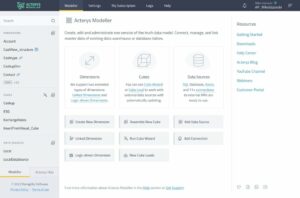
Table of Contents
No matter what your business looks like at present, it is essential to establish a successful inventory plan and management strategy to ensure the success of your business. Developing an effective inventory plan is crucial since it helps to enhance customer satisfaction, increase profitability, reduce costs, and improve cash flow. Previously, we looked at the basics of inventory planning and the four main pillars of an inventory plan. In this blog, we bring everything together by reviewing the step-by-step process that companies can adopt to lay out a plan that is most suitable for their requirements. Let’s dive in.

What is Inventory Planning
Inventory planning is defined as the estimation of products required to efficiently cater to future sales. Through forecasting, your company can predict how much sales your company will make in the next quarter, and plan the inventory accordingly.
Step 1: Gather data for your inventory planning
Businesses usually have valuable data dispersed across multiple systems, such as spreadsheets, inventory management systems, budgeting software, and other databases. Unifying data across systems is the first step in a successful planning process. It allows you to instantly unlock invaluable knowledge with a unified view of the most current, comprehensive insights to help you make fast, effective, and smart decisions.
Imagining the potential that data holds to inform your future inventory needs can be an incredibly powerful tool. Examining trends and patterns through analysis could provide you with a greater understanding of where the demand lies, enabling smarter planning for successful business growth.
When you consolidate data accurately, you can make intelligent and informed decisions about inventory planning – ensuring that your predictions are reliable to stay in sync with market demands.
Step 2: Create data models
To effectively analyze data and generate forecasts for future customer demand, you need to model your data. A data model (such as a star schema) visually connects the main data assets of your business and creates relationships between different data points.
With accurate data models, you can understand how changing attributes may affect your plan. For example, your business might have experienced an increase in sales last year when you hired more staff members to assist customers in physical stores.
Accurately predicting future demand depends on finding the right relationship between multiple variables. To ensure reliable forecasts, a data model should be crafted with meticulous attention to detail.

[ctabutton title=”5 Best Practices for Connected Planning, Budgeting, & Forecasting ” content=”Download this whitepaper to discover the perfect recipe for driving Planning, Budgeting & Forecasting transformation.” button=”Get Whitepaper” url=”https://landing.acterys.com/planning-budgeting-forecasting-best-practices”]
Step 3: Forecast customer demand and account for varying factors
Ideally, companies should use probabilistic demand forecasting techniques instead of deterministic ones. In the post-pandemic world, the retail and manufacturing industry has experienced unexpected demand for various product categories.
Probabilistic demand forecasting can help you to analyze a range of possible outcomes for a given set of variables. With scenario planning, you can accurately predict and assess customer demand fluctuations based on influencing factors. Get ahead of the game by preparing for various scenarios that could potentially affect your future business.

Step 4: Lay out the plan of your inventory planning
After determining demand forecasts, you need to define the remaining factors of the plan:
1. Choose a suitable replenishment strategy and model
Sometimes, businesses choose different strategies and models for different product categories and customer segments. For example, ABC analysis is a replenishment strategy that divides inventory into three categories. Category A represents high-value products with low sales, Category B represents average-value products with average sales, and Category C represents low-value products with high sales. This can help you to replenish low value – high sales products more often than high value – low sales products.
2. Determine reorder point and amount
By utilizing advanced forecasting practices, followed by selecting a replenishment model that suits your business needs, you can ensure a successful inventory management strategy. By doing so, smart choices can be made on product categories and their restocking frequency, maintaining optimal stock flow rates for maximum profitability. Models like Economic Order Quantity and Reorder Point are used to determine these metrics.
3. Finalize budget
Before you can lay out your inventory plan, you must understand the cost-to-serve every possible demand outcome. With probabilistic demands in hand, you can figure out the cost requirements of different scenarios and realize the budget to allocate for efficient inventory replenishment and customer demand fulfillment.
4. Factor in lead time and safety stock
To ensure a seamless customer experience, your inventory plan culminates in the creation of strategic buffers. Careful calculation will yield optimal stockpiles ready to be sold while new orders come in – providing an extra layer of protection against unexpected gaps.
Step 5: Execute and track KPIs
With your inventory plan ready, you can now execute the plan by investing the cost required to purchase the forecasted inventory. Consistent inventory auditing is key to maintaining a successful business strategy. Keeping track of merchandise and monitoring supplies helps guarantee resources are utilized efficiently – leading to ultimate success. Customized dashboards that monitor and display inventory levels, cost of goods sold, selling expenses, and gross profits can provide great value to a business.

Step 6: Adjust and repeat your inventory planning
To keep your car running smoothly, you constantly maintain it with oil changes, tire rotations, and gas refills. Similarly, regularly adjusting the plan to accommodate new data is the most crucial part of inventory planning.
Before you know it, the expected replenishment cost for a certain product may increase due to shortages in the market. And without timely modifications to your plan, you could miss important objectives with no concrete explanation as to why. Make sure that regular tweaks are made so you can stay on track and reach those business goals. Using advanced planning tools that allow you to factor in and visualize the impact of last-minute changes can be valuable to create practical inventory plans.
[ctabutton title=”Want to Build Agile and Dynamic Inventory Plans?” content=”Take Acterys Power BI out for a test drive now!” button=”Start Free Trial” url=”https://acterys.com/start-your-trial/”]
Conclusion
Having a well-designed inventory strategy is crucial for companies as it guarantees that they always maintain an appropriate amount of stock, fulfilling customer needs and contributing to the smooth functioning of the enterprise.
You can sign up for a 14-day free trial of Acterys today and see how it enhances your inventory planning process and outcomes.
Check out the next blogpost in the series: Stock Up for Success: How to Choose the Right Inventory Planning Solution?
Key Takeaways:
- Establishing a successful inventory plan and management strategy enhances customer satisfaction, increases profitability, reduces costs, and improves cash flow.
- The first step to effective inventory planning is to gather data from various sources and unify them. Data analysis helps identify trends and patterns, enabling smarter decision-making and synchronization with market demands.
- Data modeling is crucial for generating accurate forecasts of customer demand because they connect different data points and consider various variables to predict future demand effectively.
- Probabilistic demand forecasting techniques help to analyze a range of possible outcomes, particularly in post-pandemic scenarios with unpredictable demand fluctuations.
- The inventory planning process involves selecting replenishment strategies, determining reorder points and amounts, finalizing budgets, and factoring in lead time and safety stock to maintain optimal stock flow rates.
- Executing the inventory plan and tracking key performance indicators (KPIs) allows regular adjustments to the plan based on new data to ensure continued success and goal achievement.
FAQs:
1. Why is data gathering important for inventory planning?
Data gathering provides the foundation for making informed decisions in inventory planning. Unified data from various sources offers valuable insights into demand patterns and trends, helping businesses optimize their inventory.
2. What is probabilistic demand forecasting?
Probabilistic demand forecasting involves analyzing a range of possible outcomes for customer demand based on influencing factors. This allows businesses to prepare for unexpected fluctuations in demand, especially in industries like retail and manufacturing.
3. How can businesses choose the right replenishment strategy for their products?
Businesses can categorize their inventory (e.g., using ABC analysis) by selecting appropriate replenishment models (e.g., Economic Order Quantity) and considering factors like product value and sales volume to optimize stock flow rates.
4. Why is continuous adjustment of the inventory plan essential?
Continuous adjustment of the inventory plan helps businesses to adapt to changing market conditions and new data. Without timely modifications, businesses may miss important objectives and fail to meet customer demands efficiently.




